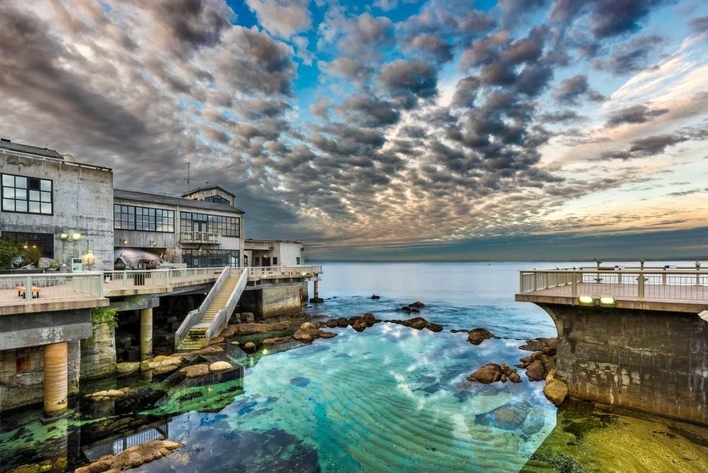The Monterey Bay Aquarium’s mission is to inspire conservation of the ocean, but the ocean is now facing the greatest environmental challenge of our time: climate change. Rising temperatures and ocean acidification are affecting ecosystem health and wildlife, along with our own communities, in profound ways.
The Aquarium advocates for public policies to address climate change and ocean acidification, and conducts scientific research on the effects of climate change on marine life. And it presents science-based climate information, along with community-level solutions, to its 2 million annual visitors and 3 million social media followers.
Over the past several years, the Monterey Bay Aquarium has been reducing its own carbon emissions. Now, it is taking additional actions to meet or exceed the ambitious emissions targets set by the Paris Agreement, as well as the renewable energy and electric vehicle targets set by the State of California. Actions include:
- 100% renewable energy. On March 1, 2018, the Aquarium’s electricity became “carbon free” when it enrolled in Monterey Bay Community Power (MBCP), a new community choice aggregator serving Monterey, Santa Cruz and San Benito counties. The Aquarium's team championed the creation of MBCP, and urged the development of MBPrime, an MBCP service offering drawing only from solar and wind power. Its newest building, the Bechtel Family Center for Ocean Education and Leadership (opening 2019), will include an almost 7-kW photovoltaic array and battery storage. The aquarium is also exploring the possibility of electrifying its fleet and building systems.
- Energy efficiency. The Aquarium has been reducing its energy use through efficiency measures that include energy sub-metering, conversion to LED lighting, variable frequency drives, building energy management, “smart” buildings (advanced control systems, automation and energy data analytics) and green IT (Energy Star certification, data center consolidation, server virtualization and automatic shut-downs). Future retro-commissioning and additional energy efficiency measures, including in the new Center, will further reduce our energy consumption.
- Sustainable transportation. Monterey Bay Aquarium encourages the use of alternative transportation—and has a 36% employee participation rate—through vanpools, carpools, ride-shares, free bus passes and bike purchase loans. To promote electric vehicles and support California’s EV goals, in 2017 eight electric vehicle charging stations for were installed for staff use, funded by a grant from the Monterey Bay Air Resources District.
- Carbon credits (carbon neutral offsets). In 2017, the Aquarium was certified as a carbon-neutral organization. Its estimated carbon emissions were offset with high-quality carbon credits from two REDD (Reduced Emissons from Deforestation and Degredation) projects: Rimba Raya REDD+ in Indonesia and the Valdivian Coastal Reserve REDD in Chile, both of which meet the requirements of the CarbonNeutral Protocol.
- Communicating about climate change. For more than a decade, the Aquarium has been engaging the public on climate science and solutions. More than 800 interpretive volunteers and staff have been trained in how to have productive conversations around climate change. And by incorporating climate science curricula into teacher development, school field trips and teen programs, their efforts are reaching the next generation of ocean heroes. The Aquarium also supports nationwide efforts to share communications best practices through the National Network for Ocean & Climate Change Interpretation and ClimateInterpreter.org.
By expanding on these efforts and maintaining a firm commitment to its mission, the Monterey Bay Aquarium is proving itself to be a valuable leader in the fight against climate change. Its success proves just how possible and positive making these changes can be.
